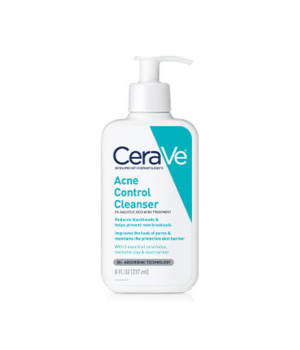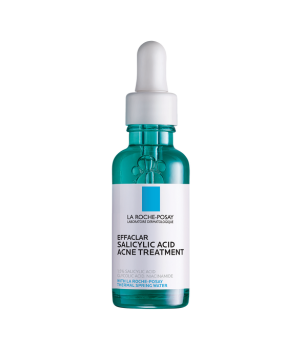Salicylic Acid
TYPE OF INGREDIENT
Exfoliant.
COMMONLY FOUND IN
Face wash, acne creams, peels, or wart removers.
WHAT ARE THE BENEFITS OF SALICYLIC ACID?
Salicylic Acid sloughs off dead skin, removes excess oil, and reduces whiteheads and blackheads. In topical form, this ingredient treats conditions such as acne by unclogging blocked pores, ultimately reducing swelling from pimples. It is also helpful in treating loose, dry skin that sheds or falls off quickly.
WHAT IS SALICYLIC ACID?
Salicylic acid is a beta hydroxy acid, made in the lab, but several natural reserves exist including willow bark, wintergreen leaves, almonds, radishes, chicory, guavas, and tomatoes.

As an organic acid, salicylic acid degrades corneodesmosomal attachments, leading to the loss of epidermal cell to cell cohesion, thereby promoting exfoliation. In addition, it reduces pH of the stratum corneum, which helps improve hydration and skin softening. As a peel, salicylic acid does not need to be neutralized.
NOTE: OTC preparations usually contain up to 2% salicylic acid which is included in the USFDA monograph for acne. OTC acne medications are FSA eligible.
IS SALICYLIC ACID SAFE FOR ALL SKIN TYPES AND TONES?
In general, those with oily skin and looking to treat superficial acne, like whiteheads, blackheads, and small red pimples.
CONTRAINDICATIONS
When using salicylic acid, avoid direct sun exposure, concomitant retinoid use, or lactation. Salicylic acid should be used in moderation until the skin can handle it without irritation. If the skin tolerates it, increase the frequency of use to twice a day. If going into direct sun exposure, it should only be applied at night.

Sources:
Mariwalla, Kavita. Cosmeceutical Compendium. American Society for Dermatologic Surgery, 2018.
Pai, Deanna. “Everything You Need to Know About Glycolic Acid, Explained.” Glamour, Nov. 2020.
Fontana Dooley, Danielle. “Why Experts Agree That Everyone Needs Glycolic Acid in Their Routine.” New Beauty, Jun. 2019.





